Search results for: Mckinsey 7s
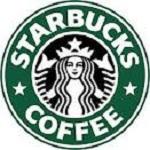
The following table revisits opportunities and threats faced by Starbucks in the UK market and briefly analyses the extent of fit between these and Starbucks strengths and weaknesses: Fit Comments Opportunities New product development Yes With the record revenues of $11.7 generated in 2011, Starbuck possesses sufficient amount of financial resources in order to engage in new product development in a successful manner Increasing the level of operational efficiency through technological innovation Yes Starbucks possesses financial and human resources to engage in research and development in order to increase the level of operational efficiency through technological innovation Increasing the range of target customer segment Yes Necessary amount of expertise and resources are possessed by Starbucks so that the range of target customer segment can be increasedSpecifically, a range of lower priced drinks and food need to be added to Starbucks menu so that individuals with lower budgets can also be included to target customer segment Threats Further damage to brand image due to paying no taxes scandal Yes Effective PR programs can be initiated by Starbucks so that the negative impact of the scandal can be minimised Adverse impact of changes in the UK taxation policy No Starbucks possesses no tools to impact changes in UK taxation policies Continuing economic issues in the EU and the UK negatively impacting the levels of consumer spending No Starbucks management can not address macroeconomic issues in the UK with negative implications on the levels of consumer spending The level of strategic fit for Starbucks The Level of Starbucks Match to CSF It is strategically important for businesses to address industry CSF in a successful manner in order to achieve long-term growth in the market. The level of Starbucks match to CSF is illustrated in Table…
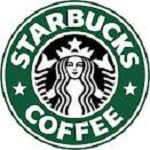
Threshold resources for Starbucks operations in the UK consist of venues, basic coffee machine, tables, cups, human resources etc. However, threshold resources would not suffice in terms of enabling Starbucks to survive the competition, and therefore, Starbucks utilises a set of distinctive resources in UK market that include effective design of shops, a wide range of fresh coffee and other products, customer loyalty card, as well as, sophisticated Verismo technology. Likewise, threshold competencies for Starbucks may consist of selling coffee drinks and food prepared through basic processes to customers in the most basic manner. Nevertheless, Starbucks strives to achieve a competitive advantage in the market through a set of core competencies that include exceptional customer services achieved through a high level of employee motivation, focus on product quality, and strong leadership from CEO and President Howard Schultz. Starbucks also possesses the following competencies and capabilities: Generating a record total revenues of USD 13.3 billion to further contribute to its strong financial position Entering the market of super-premium juices through acquiring Evolution Fresh Increasing the range of its products through the introduction of Starbucks Blond Roast Initiating a set of corporate social responsibility programs and partnerships such as strategic partnership with DonorsChoose.org, initiating Youth Action Grants, etc. Launching personalised Frappuccino drinks Starbucks Corporation Report uploaded on April 2017 contains the application of the major analytical strategic frameworks in business studies such as SWOT, PESTEL, Porter’s Five Forces, Value Chain analysis and McKinsey 7S Model on Starbucks. Moreover, the report contains analyses of Starbucks’s business strategy, leadership and organizational structure and its marketing strategy. The report also discusses the issues of corporate social responsibility.

Leadership styles exercised in two global companies – Microsoft, a global software corporation based in Washington and Apple, consumer electronics and software manufacturer headquartered in California can be compared in detailed manner. Microsoft can be mentioned as one of the stark case studies, where democratic leadership style of its founder and former CEO, Bill Gates contributed to the global success of the company making Bill Gates the richest person in the world for several years. There was a little or no change in leadership style when Steve Ballmer took over as CEO in 2000, with employees being involved in strategic decision making. On the contrary, there is a consensus amongst business researchers that late Apple CEO Steve Jobs exercised autocratic leadership style with lack of concern for employee engagement in strategic decision making (Isaakson, 2011). Moreover, Steve Jobs famously dismissed marketing research as a waste of time, stating that customers did not know what they wanted, and this fact further emphasises his autocratic leadership style. According to Steve Jobs, rather than spending large sums of money on marketing research and involving employees to discuss research findings, organisational leaders need to be engaged in developing innovative products and add innovative features in existing products that people would like to purchase (Isaakson, 2011). It is important to note that despite large differences between Microsoft and Apple leadership styles as discussed above, both organisations have been able to be highly successful in global scale. Accordingly, rigid generalisations about effective and ineffective leadership styles needed to be avoided. In other words, each individual leadership style can be effective or ineffective depending on a wide range of factors such as personality, skills and competencies of the leader, organisational culture, specifications of the industry, level of education of employees etc. Amazon.com Inc. Report contains the application…
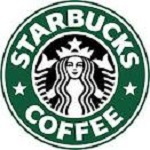
Value network analysis can be applied in relation to Starbucks operations in the UK in order to “explore the structure of its interaction with several actors in a network of relationships” (Zsidisin and Ritchie, 2008, p.40). In simple terms, value network analysis can be specified as more sophisticated version of Porter’s Value Chain analysis in a way that the former framework explains the impact of each network group in a multidirectional manner. For example, as it is illustrated in the following figure, media as an important network group within Starbucks value network has direct implications on the performance of three other individual network groups: suppliers, company operated stores, and licensed stores. This specific interrelationship can not be effectively presented within Porter’s value chain network, due to the fact that this framework is constructed in a rigid and sequential manner. The following table briefly explains the nature of impact each individual network group within Starbucks value network Network group Comments Company operated stores The largest source of revenues from the sale of drink and food products Licensed stores Licensed stores contributed to 9% of total revenues during the financial year of 2011 (Annual Report, 2011). Suppliers This network group comprises suppliers of coffee beans, food products, and various tools and technologies.Suppliers are used by Starbucks for company operated stores, whereas, licensed stores deal with their suppliers in a direct manner. Farmer Support Centres are maintained in Rwanda, Costa Rica and other locations UK Government agencies UK government agencies as an independent network group can impact both, company operated stores, as well as, licensed stores Media Has great impact on the performance of both, company operated and licensed stores. Recently, this impact has been highly negative due to extensive coverage of tax issues from a critical viewpoint.Unlike other network groups, media…
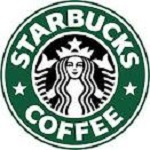
Critical success factors (CSF) can be explained as “an element of the organisational activity which is central to its future success” (Botten, 2009, p.20). The following table presents explanation of Starbucks Critical Success Factors in the UK market: CSF Explanation Quality of products Increasing level of competition in the market is fuelling the level of customer expectations regarding the quality in general, and freshness in particular Customer services Excellent customer services are being adopted as an important source of competitive edge by increasing numbers of coffee shops Shop design Coffee shops in the UK are being positioned as a ‘third place’, where people can spend most of their time apart from workplace and home (Dolan, 2012).Accordingly, relevant atmosphere needs to be developed with the interior, music and design. Social responsibility The impact of corporate social responsibility on profitability has increased significantly in the past several years. Accordingly, the level of engagement in fair trade, recycling policies, carbon emission policies, and employee treatment can be specified as important success factors for branded coffee shops like Starbucks Customer loyalty reward programs In catering industry consumer behaviour is greatly impacted by the level of attractiveness of loyalty programs that offer discounts and other advantages to loyal customers Starbucks Corporation Report uploaded on April 2017 contains the application of the major analytical strategic frameworks in business studies such as SWOT, PESTEL, Porter’s Five Forces, Value Chain analysis and McKinsey 7S Model on Starbucks. Moreover, the report contains analyses of Starbucks’s business strategy, leadership and organizational structure and its marketing strategy. The report also discusses the issues of corporate social responsibility. References Botten, N., 2009. Enterprise Strategy, Elsevier
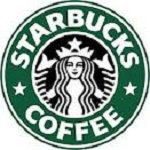
Starbucks Coffee Company is a global coffee company and a coffeehouse chain headquartered in Washington, the US, and the company operates 18,000 retail stores in 60 countries (Starbucks Company Profile, 2012, online). Starting operations in Seattle in 1971, adherence to its mission statement of ‘to inspire and nurture the human spirit – one person, one cup and one neighbourhood at a time’ coupled with an aggressive utilisation of international market expansion strategy have contributed to net revenues of more than USD11.7 billion generated during the financial year of 2011 (Fiscal Annual Report, 2011). Since entering the UK market in 1998, Starbucks currently operates 607 stores in the UK, and there are 128 Starbucks licensed stores in the country (Fiscal Annual Report, 2011). However, the company is faced with significant challenges in the UK market that relate to tax issues, and these challenges are threatening with negative implications on Starbucks growth prospects in the UK. Starbucks operates in a highly competitive industry with the top competitors including Costa, McDonalds, Dunkin Brands Group and others. Moreover, the company faces stiff competition from local cafes as well. Starbucks has licensing agreements with a wide range of companies and “the company’s significant licensing agreements include the North American Coffee Partnership, a joint-venture with the Pepsi-Cola Company in which Starbucks is a 50% equity investor, manufactures and markets ready-to drink beverages, including bottles Frappuccino beverages and Starbucks DoubleShot espresso drinks in the US and Canada” (Company Description, online, 2011). Starbucks Corporation Financial Analysis A brief Starbucks Corporation financial analysis for the year of 2010 will ensure greater depth to the current report. Starbucks faced serious financial difficulties at the end of 2007 and beginning of 2008 partially associated with the global financial crisis. However, the company performance started to improve the following years once Howard…
By John Dudovskiy
Category: Finance
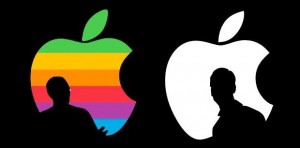
Widely considered as a controversial genius and a charismatic leader, Steve Jobs has served as chairman and CEO of Apple for 14 years and he is credited for the global success of the company. The decease of Steve Jobs on October 5, 2011 because of cancer implications resulted in grievances for millions of people around the globe, at the same time casting concerns for the future of Apple Inc. Although, a long-term Apple executive with impressive track record – Tim Cook has been named apple CEO several months before the decease of Steve Jobs, nevertheless, there are concerns about the sustainability of Apple’s innovative corporate culture, as this culture had been closely associated with the former CEO. Apple Organisational Culture on Steve Jobs Era Late Apple chairman and CEO, Steve Jobs is widely perceived as unconventional leader who was able to rally various stakeholders of the company for his vision and at the same time “demanded excellence from his staff and was known for his blunt delivery of criticism” (McInerney, 2011). According to Harrison’s Model of Culture (1972) Apple organisational culture when Steve Jobs was in charge can be classified as a power culture. Accordingly, Steve Jobs had concentrated most of the decision making powers at his hands, constantly challenging subordinates for better performance, and criticising employees blatantly and undiplomatically if their performances did not meet his expectations (Arneson, 2011). Moreover, described as “antithesis of servant leadership model” (Katzenbach, 2012), Steve Jobs was famous for pressurising teams and individuals to better performance and creating a corporate culture of high level of performance where A list employees would thrive, however B list employees, comprising the majority of workforce, would be subjected to unnecessary level of stress. According to Harrison’s Model of Culture (1972) the power culture has both advantages, as well…
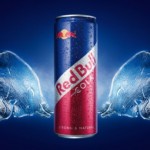
Red Bull GmbH is a multinational beverage company based in Austria that sells a famous Red Bull energy drink. The company sells its products in 162 countries, and 4,204 billion cans of Red Bull were sold during the year of 2010 alone (Company Figures, 2011, online). The company product range consists of Red Bull drink, Red Bull sugar free, Red Bull Cola and Red Bull energy shots. Its mission statement is: “We are dedicated to upholding Red Bull standards, while maintaining the leadership position in the energy drinks category when delivering superior customer service in a highly efficient and profitable manner” (Mission/Values, 2011, online) This article represents a report that presents analysis of marketing communication strategies of Red Bull in two countries – UK and China. The article comprises the review Red Bull’s current marketing communication strategy in UK and China and formulates recommendations for improvement and change for the company. Red Bull GmbH Report contains the application of the major analytical strategic frameworks in business studies such as SWOT, PESTEL, Porter’s Five Forces, Value Chain analysis and McKinsey 7S Model on Red Bull GmbH. Moreover, the report contains analyses of Red Bull’s business strategy, leadership and organizational structure and its marketing strategy. The report also discusses the issues of corporate social responsibility. Review of the Current Practice Red Bull’s Marketing Communication Strategy Usage of Marketing Communication Strategies by Red Bull Marketing has been identified as one of the most crucial aspects of the business by Red Bull along with many other businesses. Red Bull relies in marketing communication in order to conduct its marketing strategy. Marketing communication can be defined as “all communication activities an organisation undertakes to promote its agenda to its audiences” (Gillis, 2006, p.392). Marketing communication mix, on the other hand, has been defined as “a number…
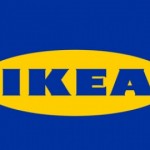
Founded in 1943 by Ingvar Kamprad, IKEA generated the sales of 23.1 billion Euros in 2010 through its operations in more than 38 different countries with 27 distribution centres. The IKEA Group has 280 stores in 26 countries and the remaining of the stores are run by franchisees (Berger, 2011). The business concept of IKEA involves selling high volume of mostly furniture products in low prices. Moreover, “with an aim of lowering prices across its entire offering by an average of 2% to 3% each year, its signature feature is the flat packed product that customers assemble at home, thus reducing transportation costs” (Profile:IKEA, 2011, online) The vision of the company reflects this strategy in an effective manner. “The IKEA vision is to create a better everyday life for many people. We make this possible by offering a wide range of well-designed, functional home furnishing products at prices so low that as many people as possible will be able to afford them” (Inter Ikea Systems B.V, 2011, online). As one of the leading retailers in a global scale IKEA is engaged in systematic environmental monitoring and analysis which serves to be an effective source of information for decision-making. Internal benchmarking is one of the main methods of environmental monitoring and analysis engaged in by IKEA. Benchmarking is “method of improving business performance by learning from other companies how to do things better in order to be the ‘best in the class’”(Janakiraman & Gopal, 2007, p.181). The Internal benchmarking practice engaged in by IKEA involves comparing different divisions and subsidiaries of the company and thus establishing the best practice and aspiring to it for the remaining divisions and subsidiaries of the company. Moreover, IKEA is engaged in extensive market research both in global and local levels that is conducted by marketers…
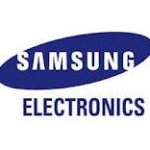
Samsung Electronics is based in Seoul, South Korea and operates in 65 countries worldwide with 157,000 people working for the company. Samsung Electronics products include semiconductors, hard drives, digital displays, home electronics, mobile phones, and others. All Samsung products have the same tone when the device is turned on, so that customers can easily get used to them and this tone is mentioned when Samsung products are being advertised as well. The business strategy of Samsung Electronics presents an interesting case due to the fact that the company has an experience of pursuing both, cost leadership as well as product differentiation strategies during its lifetime. Specifically, Mitchell (2010) informs that business strategy of the company was mainly cost efficiency prior to Asian Financial Crisis of 1997, as a result of which the company came on the verge of bankruptcy, and the situation was changed with Eric Kim becoming chief marketing officer of the company, who brought dramatic changes to the strategy of the company pursuing product differentiation strategy. “Smarter Life” theme was introduced recently in Samsung that is based on the innovative approach in improving the company’s current products, and introducing new products to the market. For instance, Android-based Samsung Galaxy Player 50 is to be introduced soon, containing a range of innovative features the product is expected to change the current media players’ market condition significantly. As a part of the massive initiatives aimed at pursuing product differentiation strategy efficiently Samsung design staff has been tripled to 400 globally (Singhania, 2006), along with numerous other measures. Dramatic change in the strategy of the company has allowed Samsung Electronics to emerge as one of the main players in all of the markets the company operates in. For instance, Galaxy Tab produced by Samsung is currently considered to be the only substantial…
